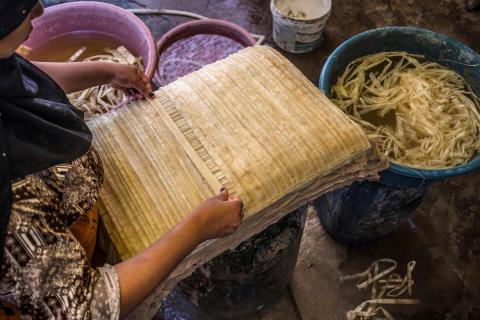Egypt papyrus makers keep tradition alive

In the lush green fields of Egypt's fertile Delta Valley, farmers and artisans are struggling to make a living as they keep alive the Pharaonic-era tradition of making papyrus.
class='cf'>
In the 1970s, an art teacher in the village of al-Qaramus taught farmers the millennia-old techniques for transforming the plant into sought-after paper decorated with ornate drawings and text.
The village and its surrounds, located about 80 kilometers northeast of Cairo, now make up the largest hub of papyrus production in the country, experts in the sector say.
Once used by ancient Egyptians as writing paper, local artists now decorate the papyrus with hieroglyphics, Arabic calligraphy and representations from antiquity and nature to create souvenirs for eager visitors.
But tourism in the North African country has taken a battering since its 2011 revolution, and after a Russian airliner was downed by ISIL in 2015.
The COVID-19 pandemic has further debilitated the sector: Egypt earned just $4 billion in tourist revenues last year, a quarter of what it had anticipated before the global health crisis.
class='cf'>
Today, al-Qaramus has 25 farms trying to make ends meet by selling papyrus, compared to around 500 prior to the revolution, according to farmer and artist Said Tarakhan.
"I lost about 80 percent of my total income, I used to earn nearly $1,000 a month and now it's almost zero," the 60-year-old told AFP as he showed off his replica Tutankhamun paintings.
The papyrus plant, with its fan-shaped foliage, grows in water and can reach four meters in height. Its form has served as inspiration for decorating the columns of ancient Egyptian temples.
To make paper, workers use wire to cut the stems into thin strips,...
- Log in to post comments










